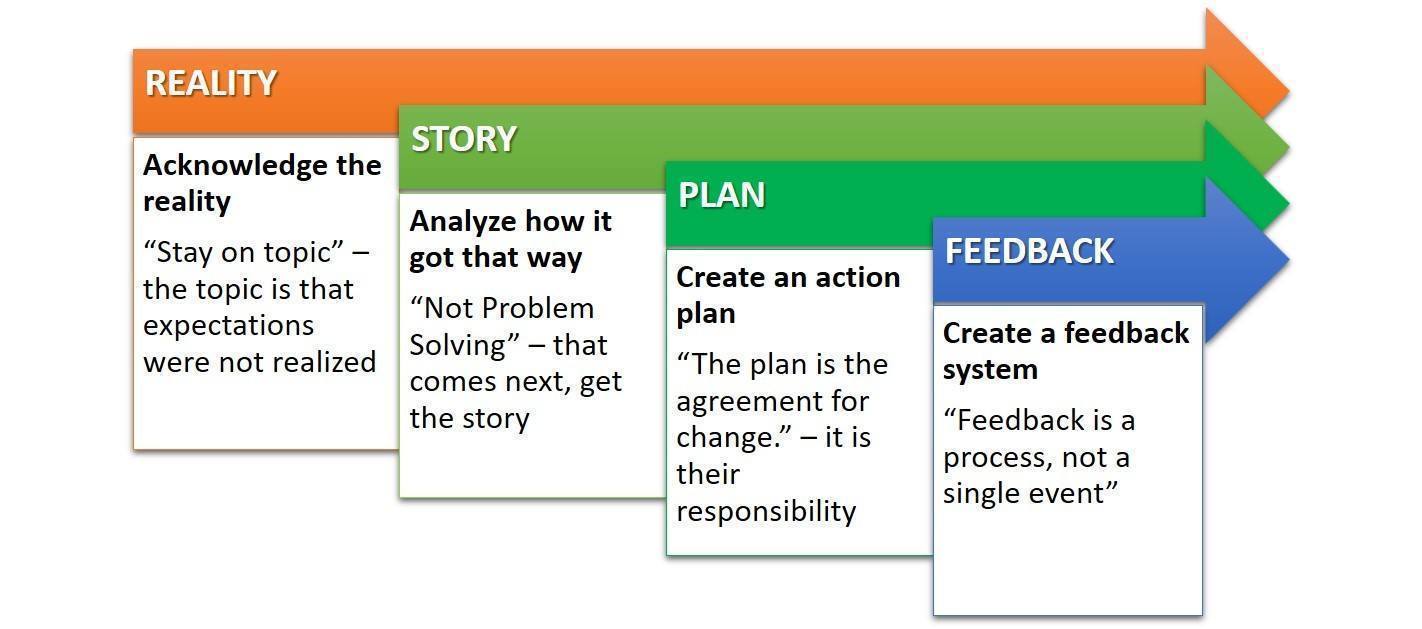A moment of truth conversation is like it sounds. You take a few moments to aid learning and growth. When done right, it helps individuals move toward excellent performance. On average, from my experience, a moment of truth is only a few minutes.
Every leader faces times when a person needs some correction in their behavior or the project they are working on. Unfortunately, you often ignore the opportunity, which builds into the need for a much more difficult moment of truth conversation.
When you follow the basic principle of "measure small, measure often," you help people adjust as they need it. You don't let it build into some significant event. That is the purpose of a moment of truth that Robert Fritz and Bruce Bodaken created (Managerial Moment of Truth).
As a certified instructor of the MOT, I see how often it helps leaders, individuals, and organizations. People, especially leaders, need it to create performance excellence from everyone.

Know a Moment of Truth When You See IT
It isn't easy to understand something without a clear definition. A moment of truth is no different. Here is the definition of a moment of truth.

Note the two parts - Awareness and Decision. The first part, Awareness, means that you pay attention to the goals and work of the people you work with or lead. You also make sure that you clearly state the expectation or the end result of their work. That clarifies any difference between what they deliver and the original expectation is easy to recognize.
Both of those elements are extremely simple, but they take a leader's time and effort. And, if you don't do that with the people you lead, you are not performing a critical part of your job as a leader.
The second part, Decision, is critical. What if you provide clear expectations, track the progress, and know that the expectation wasn't met – AND DO NOTHING? Performance excellence does not develop from that structure unless you have highly self-governing individuals.
Most of the time, people resort to punishing or controlling in those situations, which creates a structure of fear, not learning and growth.
Neither of those approaches is acceptable.
A moment of truth is effective when leaders are aware and decide for learning and growth. Even when you decide for learning and growth, you always have the emotional conflict ready to stop you. Either you want to share the truth and pursue the best for those you lead, or you don't. Either you value truth and developing people, or you don't.
Be Careful
Now, think about a recent time when you became aware that someone did not meet the required expectations. It may have been a person who works for you, with you, or a family member. If you have a situation in mind, you are in the first part of the moment of truth definition.
Okay, what did you do once you knew the expectations were missed?
Too often, leaders do and say nothing! That is far too common. Remember, some form of emotional conflict is one of your biggest enemies. It is often a combination of - "I don't want to hurt their feelings" and "I'm too busy right now." Just those two thoughts demand that you do nothing.
Other times, you say something, but you handle the situation poorly. That creates a structure to say nothing the next time because this one was a shipwreck.
Sound familiar? That is true for me.
If someone does not meet expectations and you say nothing or handle the situation poorly, you imply that it is OKAY to perform at less than excellent levels. Or, it is okay to fall short of expectations as long as there is a good excuse.
You create a structure that says poor performance is OKAY with the organization and me! While that is to accept, it is reality. On the other hand, if the situation is handled well, you message that you want to grow and learn, develop and improve, and have performance excellence.
So, the next time you are aware of unmet expectations, what will you do? Just remember, your ACTIONS imply what you VALUE!
Two Types of a Moment of Truth
When you first learn about a moment of truth, people see how it can be used to correct a person's behavior. That makes sense because we discussed missed expectations and doing something about that. But there are two forms; Corrective and Positive.
The Corrective Moment of Truth is, as it sounds, used to correct a person’s behavior.
- Examples: Missed due dates; Incomplete assignments; Unacceptable quality of work; Unclear goals; Not supporting values, strategy, purpose; Wrong orientation, spirit, attitude; Lack of preparation; Incomplete information, data
The Positive Moment of Truth is used to learn from a person how they did so much better than others. This form is about learning from the person and teaching others the process they used.
- Examples: Exceptional performance; Breakthrough thinking or actions; Transformational change; Order of magnitude difference
IMPORTANT – Positive moments of truth are NOT recognition, praise, or affirmation. It is about learning from the person and using their learnings to help others in the organization learn!
Now that you have some thoughts on preparing for a moment of truth, you can learn about the four steps to use this great tool. Check out this blog for some more information about the four steps.
